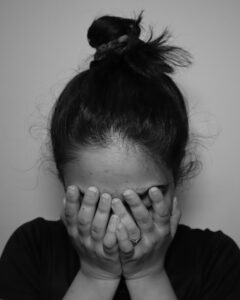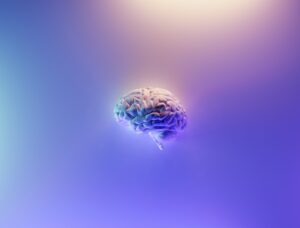Seasonal Affective Disorder (SAD) is a form of depression, also called seasonal depression or major depressive disorder with seasonal patterns. It affects 5% of the adult population, most noticeably between January and February, and is more prominent in women than in men. It commonly begins between the ages 18-30.
 There are rarer cases of seasonal depression occurring in summer, sometimes called “summertime sadness.” Those who live in the northern hemisphere, where there are fewer daylight hours during the winter months, are most likely to occasionally (or regularly) experience SAD.
There are rarer cases of seasonal depression occurring in summer, sometimes called “summertime sadness.” Those who live in the northern hemisphere, where there are fewer daylight hours during the winter months, are most likely to occasionally (or regularly) experience SAD.
SAD is often trivialized, both by the people who experience it and those who hear about it. People who refer to it as “winter blues” may not know how debilitating this type of depression can be. It is intense enough to disrupt mood, focus, outlook, and daily functions.
Symptoms of Seasonal Affective Disorder include a lack of energy, feelings of guilt, hopelessness and worthlessness, social withdrawal, irritability, angry outbursts, increased appetite for carbohydrates, weight gain, decreased sex drive, and physical ailments like headaches and migraines.
While it can be a difficult experience, SAD is also treatable. There are several treatments for SAD, including talk therapy, light therapy, antidepressant medication, or a combination of all of these. Symptoms will improve as the seasons change, but treatment ensures that the symptoms of SAD will improve more rapidly.
People who experience seasonal affective disorder on a yearly or regular basis become able to prepare for the season’s change by obtaining necessary medications and booking relevant therapy sessions in advance.
What causes seasonal affective disorder?
All of us are regulated by internal processes that occur in our bodies, often without us being aware of it. Cells interact with hormones, tissue, and organs to produce certain functions.
Physical sensations like hunger, thirst, alertness, sleepiness, and the urge to urinate are all examples of how our bodies are at work to help us stay alive and healthy. These complex events are called circadian rhythms, and they are controlled by our brains constantly throughout the day.
Circadian rhythms work in response to signals from our environment, such as the levels of light and darkness around us, and our core temperature. For example, when the light outside begins dimming, our eyes send a message to our brain via our nervous system that it is nighttime, and therefore our body should begin powering down.
 In response to this, our brain performs a series of tasks, including releasing melatonin into our nervous system. This hormone is responsible for making us feel sleepy and readying us for bed. As we drift off to sleep, our brain begins shutting down certain functions such as the bladder and bowels, and begins regulating our body temperature to a constant, so that we have good sleep.
In response to this, our brain performs a series of tasks, including releasing melatonin into our nervous system. This hormone is responsible for making us feel sleepy and readying us for bed. As we drift off to sleep, our brain begins shutting down certain functions such as the bladder and bowels, and begins regulating our body temperature to a constant, so that we have good sleep.
This is why certain technologies, like televisions, computers, and cell phones now have a blue light filter function. Research has shown that blue light, such as that given off by electronic screens, causes our circadian rhythms to be affected. Daylight is similar to the blue light on our devices.
Absorbing a lot of blue light at night can trick our brains into thinking it is still daytime, and delay the release of melatonin, meaning that our sleep may get affected. Yellow light is softer and less disruptive to the circadian rhythm, so the filters on the devices ultimately help our sleep patterns.
SAD and the circadian rhythm.
There is a similar circadian rhythm that happens on a broader spectrum during the yearly seasons. Exposure to warm temperatures and long periods of bright sunlight in the summer months causes vitamin D to be absorbed into our nervous system. Our brains use Vitamin D, along with hormones like serotonin and endorphins, to produce happy and content moods.
These upbeat moods, fueled by warmth and light and manufactured by our brain, are the scientific explanation for that summertime good feeling. However, a lack of daylight and persistent cold temperatures can affect circadian rhythms and produce low and depressed moods which are responsible for seasonal depression and SAD.
The lack of sunlight, the shorter days, and the persistent cold temperatures may have the same effect on our circadian rhythm as nighttime does. That is to say that our brains might produce large amounts of melatonin during winter, due to the lack of sunlight.
Melatonin is helpful for sleep, but in the hours that require us to be productive, alert, and functional, the flux of melatonin is counterproductive. Instead of being productive, we might feel sleepy, lethargic, and emotional, which in turn could result in us feeling irritable, antisocial, and hopeless.
This is a practical explanation for SAD. However, there is still research being done into the disorder. We cannot rule out genetic explanations, where people might simply have a disposition toward depression.
SAD can overlap with bipolar disorder, autism spectrum disorder, anxiety disorder, and health concerns like heart disease. For this reason, it is best to consult a healthcare professional for a diagnosis and to determine whether additional issues also need to be treated.
Treatment and tips for SAD.
 The most common treatment for seasonal affective disorder is light therapy. This is exactly what it sounds like: the person experiencing seasonal depression is exposed to bright light for certain lengths of time, daily. Because SAD is linked to an increase in melatonin due to the decrease of daylight in winter, exposure to bright light is the safest and most obvious treatment.
The most common treatment for seasonal affective disorder is light therapy. This is exactly what it sounds like: the person experiencing seasonal depression is exposed to bright light for certain lengths of time, daily. Because SAD is linked to an increase in melatonin due to the decrease of daylight in winter, exposure to bright light is the safest and most obvious treatment.
The lights that are used have filters that block harmful UV rays and are often placed in a booth or a box in which you can comfortably sit. It is recommended to do at least twenty minutes of light therapy early in the morning and to do so daily throughout winter.
Light therapy can also be done in the fall months and prior, as a way of adapting to the seasons. This is recommended especially for people who experience SAD every year.
Talk therapy is helpful as an additional treatment or as an alternative treatment to light therapy. Cognitive behavioral therapy (CBT) is an effective form of talk therapy and is used by most professionals.
There is a form of CBT for people experiencing seasonal depression (CBT-SAD). Like other forms of depression, SAD not only affects our bodies but our thought life and entire outlook on life. CBT helps us to identify our negative thoughts and to replace them with more balanced and positive thoughts. Sessions are often in a group setting twice weekly and last for up to six weeks.
The effectiveness of light therapy has been studied and found to help symptoms more immediately than talk therapy. However, the effects of CBT are effective long-term. This is why it is advisable to supplement one form of treatment with the other.
Additionally, it may be necessary to use antidepressants to combat SAD. Selective serotonin reuptake inhibitors (SSRIs) can drastically improve a patient’s mood. However, there are side effects to all the drugs used to treat depression.
In addition to each of these treatments, health professionals advise that those who experience seasonal depression refrain from alcohol during the winter months, eat as healthily as possible, and take regular exercise outdoors. These simple measures have been proven to have a profound effect on people who were otherwise debilitated by SAD.
Next steps.
 Seasonal affective disorder is a real type of depression, and not simply winter blues. It affects adults mostly 18-30 years old, and predominantly women. Symptoms may include lethargy, irritability, fluctuating weight, suicidal thoughts, and social introversion. It is uncertain what precisely causes SAD, but studies have linked the lack of sunlight in winter months to chemical processes in the body, resulting in depression.
Seasonal affective disorder is a real type of depression, and not simply winter blues. It affects adults mostly 18-30 years old, and predominantly women. Symptoms may include lethargy, irritability, fluctuating weight, suicidal thoughts, and social introversion. It is uncertain what precisely causes SAD, but studies have linked the lack of sunlight in winter months to chemical processes in the body, resulting in depression.
Seasonal Affective Disorder is often linked to pre-existing mental health conditions, like bipolar. It also might be connected to any number of physical ailments and diseases. For this reason, professional diagnosis is encouraged, where an expert can run extensive mental health tests and consider medical history. A doctor will also discuss and explain methods of treatment for you, ensuring that you pick the best one, or the best combination.
SAD can be debilitating, especially if experienced every year, and may persist for 40% of the year. However, it is also treatable. There is a small range of treatments to try, including light therapy, talk therapy, antidepressants, and a healthy lifestyle. Professionals suggest a combination of each of these treatments for the best results, both immediate and long-term.
Further help for seasonal affective disorder.
Whether you are feeling a bit low, or depressed with suicidal thoughts, it is highly recommended that you talk to someone about it.
Part of battling any type of depression might be getting a medical diagnosis and starting the right course of medical treatment, but another important component is finding a counselor or therapist with whom you can share your struggles. If you need help connecting with a professional counselor, we can help. Call our office and book an appointment at your convenience.
“Foggy Day”, Courtesy of Annie Spratt, Unsplash.com, CC0 License; “Sad”, Courtesy of Simran Sood, Unsplash.com, CC0 License; “Brain”, Courtesy of Milad Fakurian, Unsplash.com, CC0 License; “Woman in White”, Courtesy of Gabriel Brandt, Unsplash.com, CC0 License

